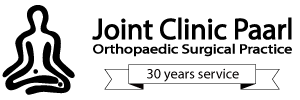The surgical replacement of the shoulder joint is the third most common joint replacement after replacement of the hip and knee joints. Like the hip, the shoulder is a ball and socket joint. However, the shoulder ‘socket’ is much more shallow to allow a greater range of movement at the cost of bony stability.
Shoulder joint replacement can be:
Partial: one articular surface is replaced, the humeral head; also known as shoulder hemiarthroplasty.
Total: both articular surfaces are replaced by prostheses; also known as shoulder arthroplasty.
Reverse: both articular surfaces are replaced but with the ‘ball’ on the glenoid and the ‘cup’, or ‘socket’ on the humerus.This is to medialise the joint centre of rotation in order to maximise the lever arm of the deltoid muscle in rotator cuff deficiency.
With an anatomic total shoulder replacement, the ball (humeral head) of the shoulder joint is replaced with an implant that includes a stem with a smooth, rounded metal head. The socket (glenoid) is replaced with a smooth, specialized plastic that is cemented into place. In essence, the diseased cartilage is removed and resurfaced with the two components. The goal is to perform a replacement that matches the patient’s anatomy as closely as possible.
In order for the replacement to be stable, anatomic arthroplasty requires that the rotator cuff is functioning. The rotator cuff helps the shoulder move and most important helps keep the ball in the socket or provides stability to the shoulder. If the rotator cuff is not functioning, the replacement will move abnormally, leading to lower function and loosening of the components. If the rotator cuff is functioning stability is maintained, and function can be excellen

